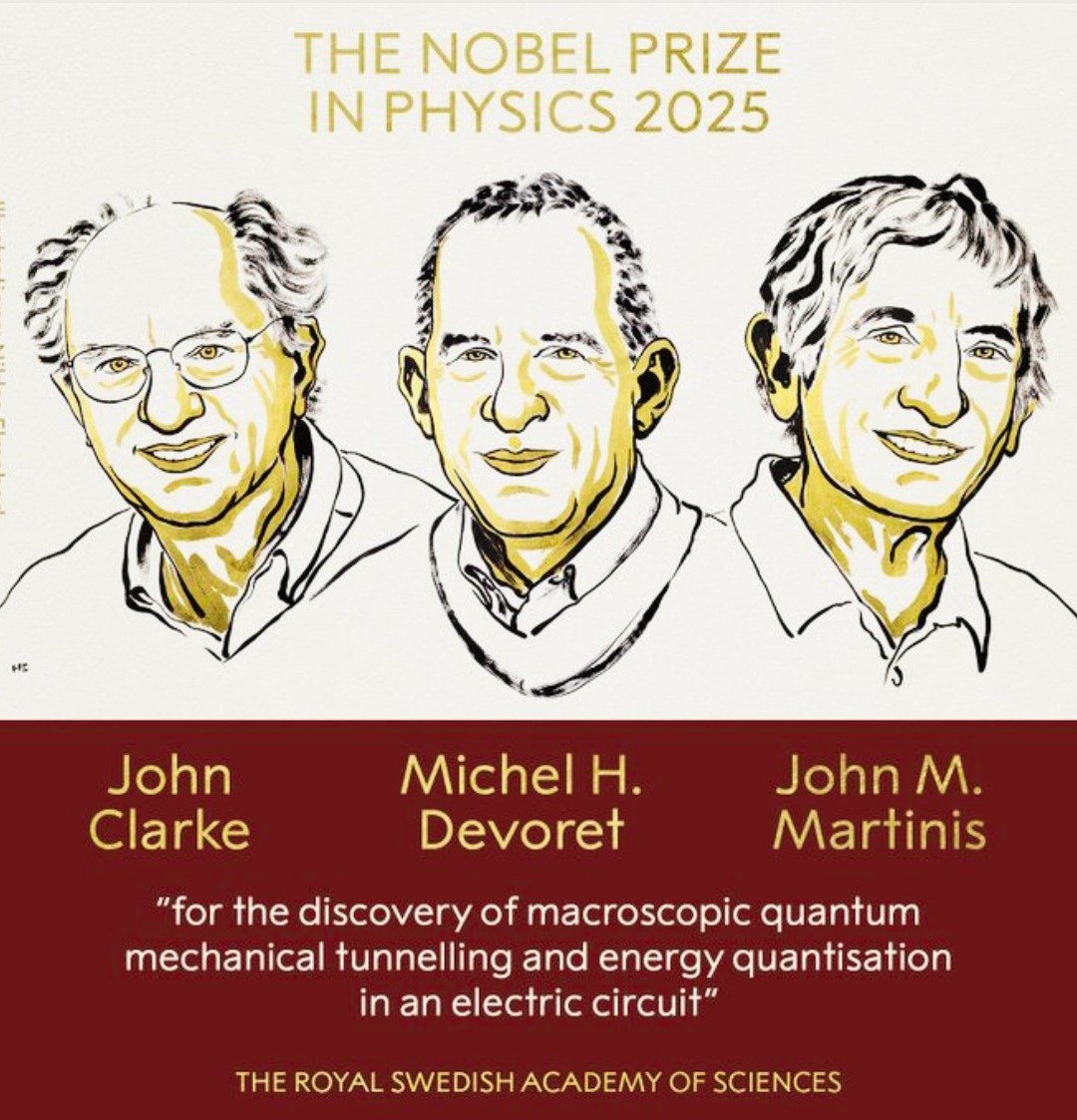Context:
The 2025 Nobel Prize in Physics was recently awarded to John Clarke, Michel H. Devoret, and John M. Martinis for their groundbreaking experiments that demonstrated quantum mechanical phenomena on a macroscopic scale in 1980s. Their work laid the foundation for the development of quantum technologies, including quantum computing, cryptography, and advanced sensors.
Scientific Achievements of noble laureate:
In the mid-1980s, the trio conducted experiments using superconducting circuits, particularly focusing on Josephson junctions, thin insulating barriers between two superconductors.
-
- These experiments revealed that quantum effects, such as tunnelling and energy quantisation, could manifest in systems large enough to be seen and touched. This was a significant departure from the traditional view that quantum phenomena were exclusive to microscopic particles.
- Their work demonstrated that large systems could behave like artificial atoms, leading to the concept of the qubit, the fundamental unit of quantum information. This realization has been instrumental in the development of quantum computing technologies.
- These experiments revealed that quantum effects, such as tunnelling and energy quantisation, could manifest in systems large enough to be seen and touched. This was a significant departure from the traditional view that quantum phenomena were exclusive to microscopic particles.
Implications for Quantum Technologies:
The discoveries by Clarke, Devoret, and Martinis have had profound implications for various fields:
-
- Quantum Computing: Their work on superconducting circuits has been foundational in the development of qubits, enabling the creation of quantum computers that can perform complex calculations beyond the capabilities of classical computers.
- Quantum Cryptography: The principles they uncovered are being applied to develop secure communication systems that are theoretically immune to eavesdropping.
- Advanced Sensors: Their research has led to the development of ultra-sensitive sensors used in various applications, including medical imaging and geological exploration.
- Quantum Computing: Their work on superconducting circuits has been foundational in the development of qubits, enabling the creation of quantum computers that can perform complex calculations beyond the capabilities of classical computers.
About the Laureates:
-
- John Clarke: A professor at the University of California, Berkeley, Clarke is renowned for his work on superconducting quantum interference devices (SQUIDs), which have been pivotal in detecting extremely weak magnetic fields.
- Michel H. Devoret: Affiliated with Yale University and the University of California, Santa Barbara, Devoret has made significant contributions to the development of quantum circuits and the study of quantum coherence.
- John M. Martinis: Formerly leading Google's Quantum AI Lab, Martinis is now a professor at the University of California, Santa Barbara. He has been instrumental in advancing quantum computing technologies.
- John Clarke: A professor at the University of California, Berkeley, Clarke is renowned for his work on superconducting quantum interference devices (SQUIDs), which have been pivotal in detecting extremely weak magnetic fields.
About Nobel Prize:
The Nobel Prize is a prestigious international award established by Alfred Nobel, the Swedish inventor of dynamite. Created through his will in 1896, the prize honors individuals and organizations making outstanding contributions to humanity.
· First awarded in 1901, the prizes cover six categories: Physics, Chemistry, Medicine, Literature, Peace, and Economic Sciences. Winners receive a gold medal, a diploma, and a cash prize.
· The awards are presented annually on December 10, Nobel’s death anniversary.
Conclusion:
The 2025 Nobel Prize in Physics is a testament to the importance of quantum mechanics in shaping our understanding of the world. Their groundbreaking research has paved the way for the development of new quantum technologies that will transform various aspects of our lives.







